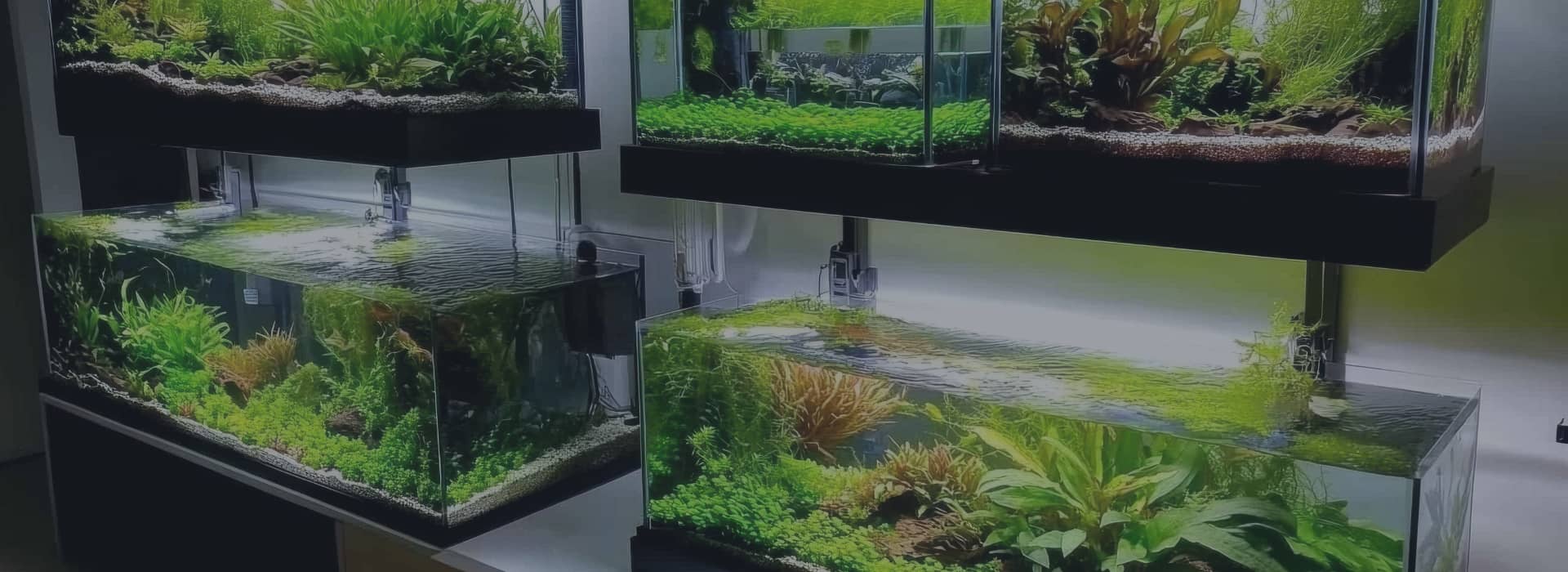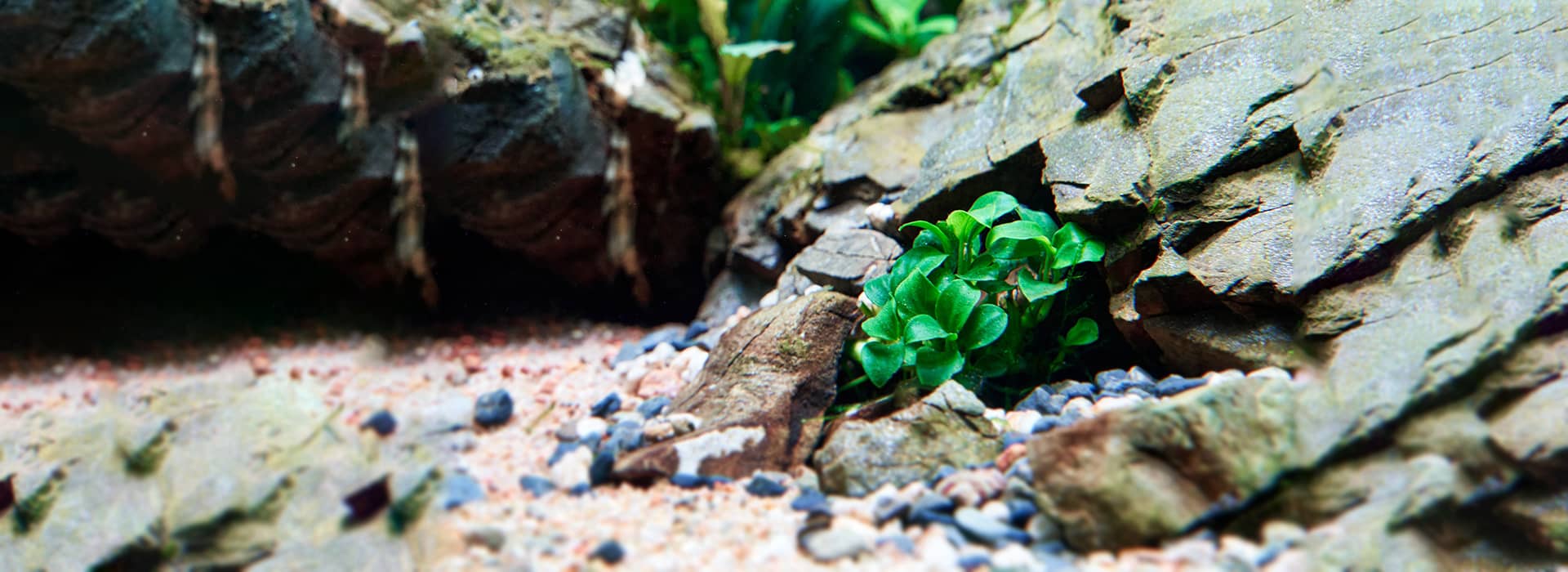Welcome to the underwater world of Cory Catfish! If you’re curious about these cool, peaceful bottom-dwellers, you’re in for a treat. Get ready to dive into a guide that spills the beans on everything you need to know to keep these finned friends happy and thriving. From their cute wiggles to their knack for tidying up the tank, we’ve got you covered. So, grab your snorkel (okay, maybe not really) and let’s explore the cozy world of Cory Catfish together!
Physical Description and Natural Habitat
Picture this: a group of charming little fish that look like they’ve been painted by a skilled artist. That’s Cory Catfish for you!
Cory catfish, also commonly referred to as “Corydoras,” are small, charming creatures that dwell at the bottom of freshwater habitats. These fish generally measure between 6 to 10 centimetres (approximately 2.5 to 4 inches) when fully grown. They have a streamlined body shape and a flat underbelly, specifically adapted for a life spent foraging on the riverbed. One of their most distinctive features is their barbels, which are short, whisker-like appendages near their mouths. These barbels are not just for show; they’re sensory organs that help the fish feel around the substrate for bits of food.
As for colouring, Cory catfish come in a variety of shades and patterns. While the base colour is often a silvery-grey, brown, or even greenish hue, some species feature intricate spots or stripes. These patterns are not just aesthetic but also serve as camouflage, helping them blend into their natural surroundings.
Speaking of natural surroundings, Cory catfish are native to South America. They inhabit slow-moving or almost stagnant rivers and streams. In these environments, they tend to gravitate towards areas with a soft, sandy or muddy bottom. This type of substrate makes it easier for them to sift through the soil in search of food, which primarily consists of small invertebrates and plant matter.
The water conditions In their natural habitat are generally warm, ranging from 22-28°C (72-82°F), with a pH that is either slightly acidic or leans towards neutral. These fish don’t appreciate strong currents, so slower-moving waters are their preferred spots.
Benefits of Keeping Cory Catfish in an Aquarium
Cory catfish are a top choice for a bunch of good reasons such as:
- Easy to Care For
- Social and Entertaining
- Good Community Tank Members
- Natural Cleaners
- Visually Appealing
Easy to Care For: Cory catfish are hardy little creatures that are quite forgiving when it comes to water conditions. They’re most comfortable in water temperatures ranging from 22-28°C (72-82°F), but they can adapt to a variety of settings.
Social and Entertaining: One of the standout traits of Corys is their social nature. They prefer to be in groups, usually of six or more, and provide endless entertainment as they interact with each other while swimming or foraging at the bottom of the tank.
Good Community Tank Members: These fish are peaceful by nature and get along well with other non-aggressive species. This makes them ideal candidates for community tanks where different types of fish are housed together.
Natural Cleaners: Cory catfish serve a functional role in your tank by acting as natural cleaners. They love to sift through the substrate, picking up bits of uneaten food and algae. This not only keeps the tank clean but also helps to prevent waste buildup.
Visually Appealing: Last but not least, Corys are just simply good-looking. With their distinctive barbels and a variety of colours and patterns, they add a unique aesthetic element to any aquarium setup.
Setting up the Perfect Environment
Setting up the right environment is crucial for the well-being of these fish. From choosing the right substrate to ensuring proper water conditions, here’s how to make sure your tank is a happy and safe home for these social little fish.
Choosing the Right Tank Size
First off, let’s talk about tank size. For Cory catfish, a tank that holds at least 75-95 litres (20-25 gallons) is a good starting point. This will give them enough room to move around and also allows you to keep them in groups, which is crucial for their social well-being.
Substrate Matters
Now, about the substrate—the material that lines the bottom of the tank. This is super important for Corys because they have sensitive barbels that they use to forage. Sand or fine-grained gravel is the best choice here. Avoid coarse gravel or sharp-edged decorations, as these can damage their barbels, which can lead to infection and could be fatal.
Water Conditions
For water conditions, aim for a temperature between 22-28°C (72-82°F). The pH should be slightly acidic to neutral, falling in the 6.0-7.8 range. Consistency is key, so try to avoid any sudden changes in temperature or water quality.
Filtration and Water Movement
Corys aren’t fans of strong currents, so when choosing a filter, go for one that provides gentle water movement. A sponge filter is often a good choice for these little guys. Also, make sure to cycle your water properly before introducing any fish to ensure a stable environment.
Plants and Hiding Spots
Adding some plants and caves can make your Corys feel more at home. Just remember, they need open spaces to swim and sift through the substrate, so don’t go overboard with the decorations.
Group Dynamics
As I mentioned earlier, Corys are social creatures. Aim for a group of at least six to keep them happy. This mimics their natural environment and also provides a more entertaining display for you.
If you’re keen on setting up the perfect environment for Cory catfish, focus on the substrate to protect their sensitive barbels, maintain stable water conditions, and provide enough space and companionship.
Diet and Feeding
Feeding your Cory catfish the right diet is essential for keeping them healthy and active. Let’s delve into what you should be serving up to keep your little mates happy and thriving.
Staple Diet
When it comes to their main diet, Cory catfish aren’t fussy eaters. They’ll happily munch on commercial fish flakes or pellets designed for bottom feeders. These usually contain a good balance of proteins, fats, and fibres. Just make sure you drop the food close to them, so it sinks to the bottom of the tank, right where they like it.
Live and Frozen Foods
For a bit of variety and some extra nutrition, you can also offer live or frozen foods like bloodworms, brine shrimp, and daphnia. Feeding them these treats a couple of times a week should do the trick. But remember, these shouldn’t make up more than 25% of their diet.
Portion Control
Overfeeding is a common issue with fish, and Corys are no exception. A good rule of thumb is to feed them only what they can consume in 2-3 minutes. Doing this once or twice a day is generally enough.
Feeding Schedule
Setting a consistent feeding schedule is also beneficial. Consistency helps reduce stress.
A balanced diet is the key to keeping your Cory catfish happy and healthy. Incorporate a mix of commercial and natural foods, keep an eye on portion sizes, and stick to a regular feeding schedule for best results.
Breeding Cory Catfish
If you’re keen to raise a new generation of these delightful little fish, here’s what you need to know to get started.
Ideal Water Conditions
Firstly, the water conditions need to be just right to encourage breeding. The water temperature should be slightly warmer, around 24-26°C (75-79°F), and the pH should be on the softer, acidic side—around 6.0 to 6.5.
Spawning Tank Setup
It’s a good idea to set up a separate spawning tank with the same water parameters as your main tank. The tank doesn’t have to be massive; a 40-60 litre (10-15 gallon) tank should do the job. Use a sponge filter to keep the water clean but not too turbulent. Provide plenty of plants or breeding mops, as these will serve as spots for the females to deposit their eggs.
Feeding for Success
Before you start the breeding process, fatten up your Corys with high-quality foods like bloodworms and brine shrimp. This will increase their energy and boost their chances of successful breeding.
The Breeding Process
Once everything’s set up, transfer a group of mature Corys—usually two males for every female—into the spawning tank. If conditions are right, you’ll soon see the males chasing the females. The female will lay her eggs, often sticking them to the glass or plants, and the male will fertilise them.
By paying close attention to water conditions, tank setup, and pre-breeding feeding, you’ll increase your chances of successfully breeding Cory catfish. It’s a bit of work, but the reward of seeing a new generation of Corys makes it all worth it.
Health and Well-being
When it comes to keeping your Cory catfish healthy, a bit of know-how goes a long way. From understanding common diseases to keeping their environment clean, let’s dive into the essential tips for ensuring your Corys’ health and well-being.
Water Quality
First and foremost, maintaining top-notch water quality is the best way to prevent many health issues. Regular water changes—about 25-30% every week—can keep harmful substances like nitrates in check.
Barbels and Substrate
Cory catfish use their barbels to sift through the substrate for food. Poor quality or sharp-edged substrate can damage these barbels, leading to infections. As mentioned earlier, opt for soft, sandy substrate to help protect these sensitive organs.
Common Diseases
Now, let’s get to the nitty-gritty: diseases. Cory catfish are susceptible to a few common ailments:
- Ichthyophthirius (Ich): This is a parasite that looks like white spots on the skin. Quick treatment with over-the-counter meds can usually clear this up.
- Fin Rot: This usually occurs due to poor water quality. Signs include frayed or discoloured fins. Again, medication and water changes can help.
- Fungal Infections: These appear as white or grey patches on the skin. Specialised antifungal treatments are available for this issue.
Dietary Needs
A balanced diet can also contribute to overall health. As discussed in the feeding section, a mix of commercial pellets, live and frozen foods can help keep your Corys in tip-top shape. Avoid overfeeding, as it can lead to obesity and water pollution.
Regular Monitoring
Finally, make it a habit to observe your Corys daily. Look for changes in behaviour, like lethargy or reduced appetite, as these can be early warning signs of health issues.
By keeping an eye on water quality, choosing the right substrate, feeding a balanced diet, and being vigilant for signs of disease, you’re setting the stage for a long, healthy life for your Cory catfish.
Tank Mates: Best and Worst Choices
Tank Mate
Choosing the right tankmates for your Cory catfish can make or break the harmony in your aquarium. Let’s have a look at what qualities make for great companions, the best options to go with, and who you should definitely keep away from your Corys.
Qualities of a Good Tankmate
When it comes to ideal tankmates, you want to look for species that are peaceful and non-aggressive, so they won’t stress out your Cory Catfish. Additionally, fish that thrive in similar water conditions—temperatures between 22-28°C (72-82°F) and a pH of 6.0-7.8—are a good match.
Best Tankmates
Some top choices for Cory catfish companions include:
- Tetras: Especially neon and cardinal tetras
- Guppies: Known for their colourful appearance
- Platies: A peaceful and easy-to-care-for species
- Dwarf Gouramis: Non-aggressive and enjoy similar environments
Tankmates to Avoid
On the flip side, there are a few types of fish you’ll want to steer clear of:
- Cichlids: Many are known to be aggressive and territorial
- Large Catfish: They might see Corys as a snack rather than a mate
By choosing the right tankmates, you can create a balanced and peaceful environment for your Cory catfish. Stick with species that are easy-going and enjoy similar water conditions, and you’ll be on the road to a happy, healthy aquarium.
Maintenance and Regular Care
Here’s a rundown of the essentials to help you keep your finned mates in top condition.
Water Changes
First up is the importance of regular water changes. Aim to replace about 25-30% of the tank water every week. This helps to keep the water parameters stable and removes waste and toxins. Make sure the new water is the same temperature as the tank water.
Substrate Cleaning
Because Cory Catfish are bottom feeders, keeping the substrate clean is crucial. During your weekly water change, use a gravel vacuum to clean the substrate, particularly if you’re not using a sandy bottom. This removes uneaten food and waste.
Filter Maintenance
Filters require regular cleaning to function effectively. Depending on the type, you’ll want to clean or replace half of the filter media about once every three to six months. This ensures that the nitrogen cycle isn’t disrupted while making sure that the filter’s efficiency is maintained.
Disease Checks
During your maintenance routine, take some time to check your Corys for any signs of disease. White spots, frayed fins, or lethargy could indicate an issue. Early detection allows for quicker treatment, which could be as simple as a water change or as targeted as medication.
Feeding Routine
Stick to a consistent feeding schedule, offering food once or twice a day. Overfeeding can pollute the water, so be mindful of the amounts. Corys should be able to consume all offered food in 2-3 minutes.
Monitoring Behaviour
Last but not least, observe the behaviour of your Cory Catfish. Unusual hiding, lessened activity, or changes in eating habits could indicate stress or illness. By catching these signs early, you can take preventative action before things worsen.
Regular care and maintenance might seem like a chore, but it’s all part of ensuring your Cory catfish lead healthy, comfortable lives. By being consistent and observant, you’ll create a stable environment where your Corys can truly thrive.
Addressing Common Misconceptions
The popularity and ease of care of Cory catfish has led to a few common misconceptions that can affect how they’re cared for. Let’s clear up some of these misunderstandings to help you provide the best environment for your Cory Catfish.
- They’re Happy Solitary
One of the biggest myths is that Cory catfish are fine on their own. The truth is, they’re social creatures and prefer being in groups. A school of at least 5-6 Corys can make them more comfortable and active.
- Low-Maintenance Equals No Maintenance
While Corys are relatively low-maintenance, they still require regular care, like water changes and substrate cleaning. Keep the water at a stable temperature between 22-28°C (72-82°F) and regularly check for signs of illness.
- Any Substrate Will Do
Cory catfish have sensitive barbels that they use to sift through the substrate. Using gravel with sharp edges can lead to barbel damage and subsequent infections. Opt for softer substrates like sand to keep your Corys safe.
Understanding the facts about Cory catfish can lead to a more fulfilling aquarium experience for both you and your finned friends. A little knowledge can go a long way in ensuring the health and happiness of your Corys.
Interesting Trivia About Cory Catfish
Cory catfish come with their own quirks and unique characteristics. Here’s a list of interesting trivia about these little swimmers:
- Origins: Cory catfish originally come from South America. Yep, they’ve travelled a long way to be a part of Aussie aquariums (figuratively speaking as most Corydoras available in the hobby are captive-bred)!
- Size: On average, they grow to about 5-8 cm (2-3 inches) in length. So they’re perfect for small to medium-sized tanks.
- Social Fish: These little guys are social and prefer to be in groups. A ‘squad’ of at least six is usually recommended to keep them happy.
- Variety: There are more than 170 species of Cory catfish. This means there’s a good chance you’ll find one that tickles your fancy in terms of colour and pattern.
- Sensitive Barbel: They have little whisker-like barbels around their mouth which are super sensitive. These help them scavenge for food at the bottom of the tank.
- Bottom Dwellers: Corys love to hang out at the bottom of the aquarium, usually scavenging for food or hiding under plants.
- Short Bursts of Speed: These fish aren’t exactly marathon swimmers, but they do make quick dashes to the surface to gulp air.
- Can Breathe Air: Yep, they can breathe air thanks to a specialised part of their gills!
- Easy Eaters: They aren’t fussy eaters. From fish flakes to algae wafers, they’ll pretty much eat what you give ’em.
- Longevity: With good care, a Cory catfish can live up to five years. Some even make it to seven!
- Active Nightlife: These fellas are more active during dawn and dusk. So, don’t be surprised if you catch them zooming around during these times.
- Low Maintenance: They’re pretty hardy and easy to look after, making them great for beginner aquarists.
Hope you found these fun facts about Cory catfish interesting!
FAQ
What is the ideal tank size for Cory Catfish?
A tank of at least 75 litres is recommended for Cory Catfish. They are social creatures, so it’s best to keep them in groups of at least 5 or 6. A larger tank allows for better filtration and more space for them to explore. The tank should have a soft, sandy substrate to protect their sensitive barbels and underbellies.
What should I feed my Cory Catfish?
Cory Catfish are omnivores and enjoy a varied diet. High-quality sinking pellets should be the staple of their diet, but supplement this with live or frozen foods like bloodworms, brine shrimp, and daphnia. Feed them once or twice a day, giving only as much as they can consume in 2-3 minutes.
How do I know if my Cory Catfish is healthy?
Healthy Cory Catfish are active and social, often seen scurrying along the bottom of the tank or resting in groups. Signs of poor health include clamped fins, lethargy, loss of appetite, and discolouration. Immediate action, like water testing and potential medication, is necessary if you notice these symptoms.
Can cory catfish regenerate their barbels?
Yes, Cory Catfish can regenerate their barbels, but it often depends on the conditions of the aquarium and the severity of the damage. If your tank has soft, sandy substrate and good water quality, there’s a higher chance for successful barbel regrowth. However, it’s important to address the root cause of barbel loss, such as abrasive substrate or poor water conditions, to prevent future issues. Keep an eye out for signs of infection during the healing process, and consider adding aquarium salt or medications if recommended by a vet. Regeneration can take several weeks to a few months.
Can Cory Catfish be used to cycle a new tank?
No, it’s not recommended to use Cory Catfish to cycle a new tank. Cycling a tank means establishing beneficial bacteria to break down waste, which creates ammonia, nitrite, and nitrate spikes. Cory Catfish are sensitive to these changes in water quality and can become stressed or sick, which is inhumane.
Additionally, Cory Catfish have delicate barbels that are susceptible to damage from poor water conditions. Subjecting them to an uncycled tank can lead to infection or even permanent damage. It’s far better for both you and your fish to properly cycle your tank using a fishless cycling method before adding any inhabitants.
Conclusion: Enjoying the Gentle Presence of Cory Catfish in Your Aquarium
So there you have it! Keeping Cory Catfish is like having the ultimate underwater clean-up crew that’s always up for a good time. These little fellas not only keep your tank tidy, but they also bring a burst of energy that’s contagious. From their social antics to their curious nature, they’re a lively addition to any aquarium.
With just a 75-litre tank, some soft sand, and the right water conditions, you’re all set to enjoy the companionship of these amazing fish. Trust me, once you experience the joy these underwater critters bring, your tank will never be the same. So go ahead, make some room for Cory Catfish and dive into a world of aquatic delight!








